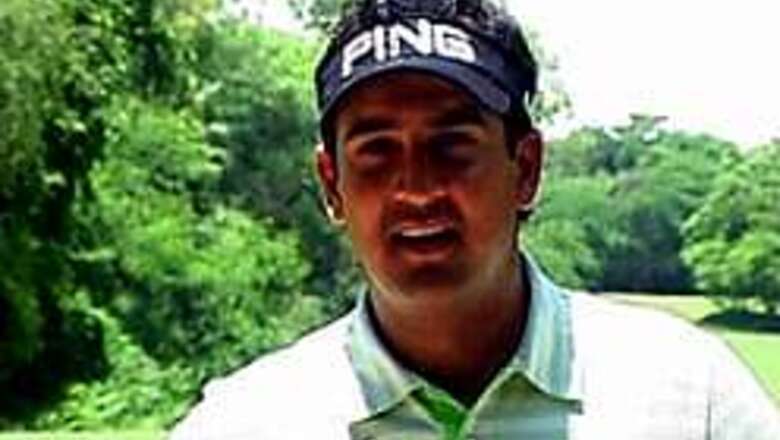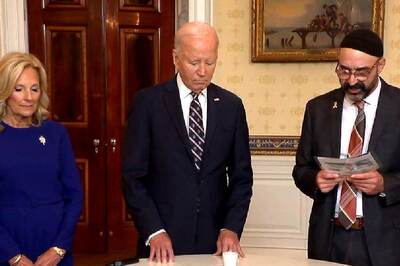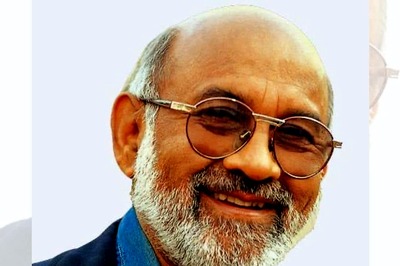
views
Akron (Ohio): No one would have stopped Shiv Kapur for an autograph if not for the golf shoes on his feet and the caddie at his side as he walked towards the practice range at Firestone Country Club.
Even some of the players at the Bridgestone Invitational wondered who he was.
Instead of checking out his swing, a dead giveaway that Kapur was a player, they looked on his bag for a name.
That didn't help, either.
Kapur is a 24-year-old from New Delhi, polished and polite. He plays primarily on the Asian Tour, where his victory late last year in the Volvo Masters made him eligible for a World Golf Championship that included 48 of the top 50 players in the world.
He checked in at No. 192.
But it's players like Kapur who make these different from run-of-the-mill US PGA Tour events.
With so much money on the US PGA Tour, and so much global competition everywhere from Torrey Pines to Warwick Hills, the identity of the World Golf Championships now comes from players no one can identify.
"There are a lot of guys I've seen this week that I didn't know who they were," David Toms said. "But that's part of world golf now. And it is a World Golf Championship. More power to them. If they can qualify, everybody else on our tour has a chance to qualify, too."
A year ago, the mystery man was Mark Cayeux of Zimbabwe.
He qualified for Firestone by winning the Tour Championship in South Africa, and his first trip to America was unforgettable.
He barely had found his locker when the pairings were released, and Cayeux was in the first group off No 10 with Tiger Woods.
It wasn't nearly as nerve-racking for Kapur, nor was it his first trip to the United States.
"I spent four years at Purdue (University)," he said. "I'm a Midwestern boy."
How he got from India to Purdue in Indiana state is another story, although it was amusing to hear Khapur tell how he expected to go a few months during the winter with limited golf, only to find out his first year that the ground didn't thaw until April.
"It was a bit of a rude welcome," he said with a laugh. "But it was OK. I was able to catch up on my studies."
Kapur kept a bad start from getting worse with birdies on his last three holes in the first round for a 72, but that was his best score of the week.
He wound up at 13-over 293 and finished 65th out of 78 players, earning $35,000.
His next stop is the European tour, with the ultimate goal of joining the US PGA Tour.
Chances are, you will hear from him again.
As for the international players with more cache, Padraig Harrington, Colin Montgomerie, Thomas Bjorn, Trevor Immelman, they have become part of the US PGA Tour landscape.
And they don't stand out at the World Golf Championships the way they once did.
PAGE_BREAK
There were 25 international players who had their US PGA Tour cards in 1999, the first year of the World Golf Championships. Now there are 69 foreign players on the US tour.
Prize money was $7.5 million at Firestone. It was $6 million at the Wachovia Championship in May.
There are times when it's hard to tell the difference between the two.
Sure, the WGC events are top-heavy with the best players because at least the top 50 in the world are eligible for them.
But with limited fields, that means fewer players for Woods to beat. And you have to wonder how hard some of them are trying, especially since there is no cut and the money is guaranteed.
Mark Hensby withdrew from the US PGA Championship with a foot injury. A week later, he managed to tee it up in the Bridgestone Invitational, finished 19 shots behind and took home $39,500.
The acronym is WGC. Maybe it should be ATM.
The Bridgestone Invitational still feels important, for no other reason than Woods, Phil Mickelson, Ernie Els, Vijay Singh and all the best players were in the field.
The buzz came from Woods winning his fourth straight tournament, and from a course like Firestone South, universally accepted as one of the best tracks on tour.
But the WGCs no longer feel as unique as they once did.
"We've got more top players here on a regular basis. Everybody in the world is wanting to get here," US PGA Tour commissioner Tim Finchem said.
"That has changed the face of the tour a little bit. The number of times during the year the vast majority of players are competing against each other is different than it was eight years ago. That was one of the purposes."
"From a player's perspective, I could see why it's a little less unique," he added. "But that's what they wanted. Tiger talks about it all the time. We're getting our mission accomplished."
Finchem sees no decrease in support or interest, and the US TV ratings in the final round were the highest for a non-major.
Woods says it's easy for him to get fired up for the WGCs because the best in the world are competing. Or maybe because it has become his annual annuity.
He has played in 23 of them (including two World Cups) and earned more than $15 million.
The next one is the American Express Championship outside London in the last week in September (Woods is the defending champion), and if the trend continues, expect a number of Americans to decide that's either too far away or too dangerous.
Next year, Amex becomes the CA Championship and will be played every year at Doral in Miami.
Do you think that won't look and feel like a regular US PGA Tour event?
And with so much emphasis on the FedEx Cup series next year, the WGCs are likely to slide even further into obscurity, notable only because of a large purse, a small field, and players like Shiv Kapur.


















Comments
0 comment